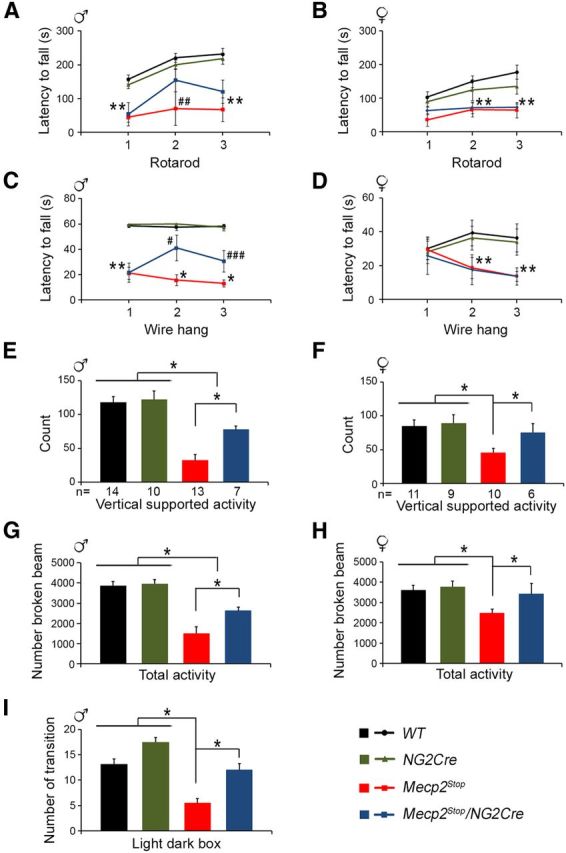Figure 6.

Expression of MeCP2 in oligodendrocyte lineage cells in Mecp2Stop/y/NG2Cre male and Mecp2Stop/+/NG2Cre female mice partially rescues some of the RTT behavioral deficits. Male and female mice were subjected to the indicated behavioral tests at 9–10 weeks or 1 year of age, respectively. A, B, Rotarod test for male (A) and female (B) mice. C, D, Wire hang test for male (C) and female mice (D). E–H, Vertical supported activity (E, F) and total activity (G, H) tests in digiscan activity monitor. E, G, Males. F, H, Females. I, Light/dark box test for male mice. The colors of the graphs and bar graphs correspond to the indicated genotypes in the right bottom corner. Male and female symbols were used in the figure to distinguish the sex of each animal's set. Two-way repeated-measures ANOVA (genotype and trial) followed by Holm-Sidak post hoc for multiple-comparisons test was used to analyze the data in A–D. One-way ANOVA followed by Holm-Sidak post hoc for multiple-comparisons test was used to determine differences between groups in E–I. Error bars indicate mean ± SEM. A–D, *p < 0.05, significant differences between the Mecp2Stop mouse group versus all other groups. **p < 0.05, significant differences between the both Mecp2Stop and Mecp2Stop/NG2Cre mouse groups versus the WT and NG2Cre littermate groups. #p < 0.05, significant differences between the Mecp2Stop/NG2Cre mouse group versus the Mecp2Stop littermate group. ##p < 0.05, significant differences between the Mecp2Stop mouse group versus the WT and NG2Cre littermate groups. ###p < 0.05, significant differences between the Mecp2Stop/NG2Cre mouse group versus all other groups. A, C, G, I, The number of mice is similar to that indicated in E. B, D, H, The number of mice is similar to that indicated in F.
